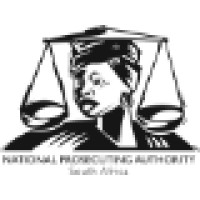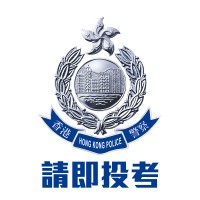
Australian Federal Police Company Cyber Security Posture
afp.gov.auThe Australian Federal Police (AFP) is a progressive and multi-faceted law enforcement organisation taking a strong lead in the fight against 21st century crime. By employing the core principles of prevention, deterrence, partnership and innovation, the AFP strives to build a more secure future for Australia and its global partners. Counter terrorism and national security are major business priorities, illustrated by the AFP's strategic focus on those areas and the ongoing dedication of significant resources. So, too, is the AFP's commitment to international relations which drive interagency collaboration and enable transnational crime to be tackled anywhere. At a national level, the AFP continues to work successfully with the Australian Government and key agencies on a range of counter-terrorism, crime-fighting and capacity building initiatives. The AFP is a truly global policing agency committed to staying one step ahead in a rapidly evolving criminal environment.
AFP Company Details
australian-federal-police
1216 employees
156808.0
922
Law Enforcement
afp.gov.au
Scan still pending
AUS_1451421
In-progress
Between 900 and 1000
This score is AI-generated and less favored by cyber insurers, who prefer the TPRM score.
 AFP Global Score
AFP Global Score.png)

Australian Federal Police Company Scoring based on AI Models
| Model Name | Date | Description | Current Score Difference | Score |
|---|---|---|---|---|
| AVERAGE-Industry | 03-12-2025 | This score represents the average cybersecurity rating of companies already scanned within the same industry. It provides a benchmark to compare an individual company's security posture against its industry peers. | N/A | Between 900 and 1000 |
Australian Federal Police Company Cyber Security News & History
| Entity | Type | Severity | Impact | Seen | Url ID | Details | View |
|---|---|---|---|---|---|---|---|
| Australian Federal Police | Breach | 100 | 7 | 10/2022 | AUS2229171022 | Link | |
Rankiteo Explanation : Attack that could injure or kill peopleDescription: The identities of secret agents working for the Australian Federal Police (AFP) have been exposed after hackers leaked documents stolen from the Colombian government. The hacktivist group Guacamaya were behind the leak. The breach included more than five terabytes of classified data, including emails, documents, and methods AFP agents were using to stop drug cartels from running their businesses in Australia. The details also exposed 35 AFP operations, surveillance reports from agents, phone tap recordings, and payroll data for Colombian officers. | |||||||
Australian Federal Police Company Subsidiaries

The Australian Federal Police (AFP) is a progressive and multi-faceted law enforcement organisation taking a strong lead in the fight against 21st century crime. By employing the core principles of prevention, deterrence, partnership and innovation, the AFP strives to build a more secure future for Australia and its global partners. Counter terrorism and national security are major business priorities, illustrated by the AFP's strategic focus on those areas and the ongoing dedication of significant resources. So, too, is the AFP's commitment to international relations which drive interagency collaboration and enable transnational crime to be tackled anywhere. At a national level, the AFP continues to work successfully with the Australian Government and key agencies on a range of counter-terrorism, crime-fighting and capacity building initiatives. The AFP is a truly global policing agency committed to staying one step ahead in a rapidly evolving criminal environment.
Access Data Using Our API

Get company history
.png)
AFP Cyber Security News
Australia unmasks $123M crypto laundering ring behind security firm
A multi-agency investigation traced illicit funds to a suspected $123 million crypto laundering operation hiding behind a security company.
Australian Federal Police: Advanced Tech for Cyber Resilience
The Australian Federal Police (AFP), in collaboration with global industry partners, has been actively combating cybercrime through a series of ...
Australian Police conducted supply chain attack on criminal collaborationware
The AFP has used this operation – codenamed "Kraken" – to remind crims of past successful efforts to decrypt supposedly secure apps, and of the ...
Iranian Cyber Actors Access Critical Infrastructure Networks
The Iranian actors have targeted multiple critical infrastructure sectors, including healthcare, government, information technology, engineering ...
Australian Federal Police leverage AI for investigations
The Australian Federal Police (AFP) is increasingly turning to AI to handle the vast amounts of data it encounters during investigations. With ...
Australian Federal Police and DXC win award for neurodiversity employment program
The AFP has been recognised for its efforts to create alternative pathways into law enforcement for neurodiverse individuals, awarded for a ...
Editors’ pick: Australia’s security architecture must evolve, not regress
Australia faces an unprecedented convergence of threats. We are confronted simultaneously by the rise of aggressive authoritarian powers, global ...
AFP & ACSC Joint Cybersecurity Advisory Flags Iranian Bad Actors
Multiple agencies have released a joint Cybersecurity Advisory warning network defenders of Iranian cyber actors' use of brute force and ...
AFP launches new cyber security traineeship program to attract ‘neurodivergent talent’
AFP launches new cyber security traineeship program to attract 'neurodivergent talent'. The Australian Federal Police is partnering with social ...

AFP Similar Companies

Singapore Police Force
The Singapore Police Force (SPF) is a uniformed organisation under the purview of the Ministry of Home Affairs. The mission of the SPF is to prevent, deter and detect crime to ensure the safety and security of Singapore. The Singapore Police Force’s official LinkedIn page should NOT be used for

National Prosecuting Authority
Introduction to the National Prosecuting Authority Section 179 of the Constitution of the Republic of South Africa, 1996 (Act No. 108 of 1996), created a single National Prosecution Authority (NPA). The Office of the National Director of Public Prosecutions was established on 1 August 1998, in t

Swedish Police Authority
Vi gör hela Sverige tryggt och säkert! Att arbeta inom polisen är ett av de finaste uppdrag man kan ha. Du bidrar till samhället genom att göra hela Sverige tryggt och säkert. Oavsett om du jobbar i en civil roll eller som polis, är möjligheterna att växa med en större uppgift många. Vi är Sverig

Kosovo Police
Historiku i PK-së Më 6 shtator të vitit 1999, Misioni i OSBE-së në Kosovë, në pajtim me Rezolutën e Kombeve të Bashkuara 1244, ka hapur Shkollën e policisë dhe ka filluar trajnimin e kandidatëve për pjesëtarë të Policisë së Kosovës. Gjenerata e parë e kandidatëve për pjesëtarë të këtij Shërbimi fil

US Border Patrol
Mission: To safeguard America's borders thereby protecting the public from dangerous people and materials while enhancing the Nation's global economic competitiveness by enabling legitimate trade and travel. Core Values ‚óè Vigilance is how we ensure the safety of all Americans. We are continuousl

Hong Kong Police Force
Vision That Hong Kong remains one of the safest and most stable societies in the world Our Common Purpose The Hong Kong Police Force will ensure a safe and stable society by : •upholding the rule of law •maintaining law and order •preventing and detecting crime •safeguarding and protecti

Frequently Asked Questions (FAQ) on Cybersecurity Incidents
AFP CyberSecurity History Information
Total Incidents: According to Rankiteo, AFP has faced 1 incidents in the past.
Incident Types: The types of cybersecurity incidents that have occurred include ['Breach'].
Total Financial Loss: The total financial loss from these incidents is estimated to be {total_financial_loss}.
Cybersecurity Posture: The company's overall cybersecurity posture is described as The Australian Federal Police (AFP) is a progressive and multi-faceted law enforcement organisation taking a strong lead in the fight against 21st century crime. By employing the core principles of prevention, deterrence, partnership and innovation, the AFP strives to build a more secure future for Australia and its global partners. Counter terrorism and national security are major business priorities, illustrated by the AFP's strategic focus on those areas and the ongoing dedication of significant resources. So, too, is the AFP's commitment to international relations which drive interagency collaboration and enable transnational crime to be tackled anywhere. At a national level, the AFP continues to work successfully with the Australian Government and key agencies on a range of counter-terrorism, crime-fighting and capacity building initiatives. The AFP is a truly global policing agency committed to staying one step ahead in a rapidly evolving criminal environment..
Detection and Response: The company detects and responds to cybersecurity incidents through {description_of_detection_and_response_process}.
Incident Details
Incident 1: Ransomware Attack
Title: {Incident_Title}
Description: {Brief_description_of_the_incident}
Date Detected: {Detection_Date}
Date Publicly Disclosed: {Disclosure_Date}
Date Resolved: {Resolution_Date}
Type: {Type_of_Attack}
Attack Vector: {Attack_Vector}
Vulnerability Exploited: {Vulnerability}
Threat Actor: {Threat_Actor}
Motivation: {Motivation}
Incident 2: Data Breach
Title: {Incident_Title}
Description: {Brief_description_of_the_incident}
Date Detected: {Detection_Date}
Date Publicly Disclosed: {Disclosure_Date}
Date Resolved: {Resolution_Date}
Type: {Type_of_Attack}
Attack Vector: {Attack_Vector}
Vulnerability Exploited: {Vulnerability}
Threat Actor: {Threat_Actor}
Motivation: {Motivation}
Common Attack Types: As of now, the company has not encountered any reported incidents involving common cyberattacks.
Identification of Attack Vectors: The company identifies the attack vectors used in incidents through {description_of_identification_process}.
Impact of the Incidents
Incident 1: Ransomware Attack
Financial Loss: {Financial_Loss}
Data Compromised: {Data_Compromised}
Systems Affected: {Systems_Affected}
Downtime: {Downtime}
Operational Impact: {Operational_Impact}
Conversion Rate Impact: {Conversion_Rate_Impact}
Revenue Loss: {Revenue_Loss}
Customer Complaints: {Customer_Complaints}
Brand Reputation Impact: {Brand_Reputation_Impact}
Legal Liabilities: {Legal_Liabilities}
Identity Theft Risk: {Identity_Theft_Risk}
Payment Information Risk: {Payment_Information_Risk}
Incident 2: Data Breach
Financial Loss: {Financial_Loss}
Data Compromised: {Data_Compromised}
Systems Affected: {Systems_Affected}
Downtime: {Downtime}
Operational Impact: {Operational_Impact}
Conversion Rate Impact: {Conversion_Rate_Impact}
Revenue Loss: {Revenue_Loss}
Customer Complaints: {Customer_Complaints}
Brand Reputation Impact: {Brand_Reputation_Impact}
Legal Liabilities: {Legal_Liabilities}
Identity Theft Risk: {Identity_Theft_Risk}
Payment Information Risk: {Payment_Information_Risk}
Average Financial Loss: The average financial loss per incident is {average_financial_loss}.
Commonly Compromised Data Types: The types of data most commonly compromised in incidents are {list_of_commonly_compromised_data_types}.
Incident 1: Ransomware Attack
Entity Name: {Entity_Name}
Entity Type: {Entity_Type}
Industry: {Industry}
Location: {Location}
Size: {Size}
Customers Affected: {Customers_Affected}
Incident 2: Data Breach
Entity Name: {Entity_Name}
Entity Type: {Entity_Type}
Industry: {Industry}
Location: {Location}
Size: {Size}
Customers Affected: {Customers_Affected}
Response to the Incidents
Incident 1: Ransomware Attack
Incident Response Plan Activated: {Yes/No}
Third Party Assistance: {Yes/No}
Law Enforcement Notified: {Yes/No}
Containment Measures: {Containment_Measures}
Remediation Measures: {Remediation_Measures}
Recovery Measures: {Recovery_Measures}
Communication Strategy: {Communication_Strategy}
Adaptive Behavioral WAF: {Adaptive_Behavioral_WAF}
On-Demand Scrubbing Services: {On_Demand_Scrubbing_Services}
Network Segmentation: {Network_Segmentation}
Enhanced Monitoring: {Enhanced_Monitoring}
Incident 2: Data Breach
Incident Response Plan Activated: {Yes/No}
Third Party Assistance: {Yes/No}
Law Enforcement Notified: {Yes/No}
Containment Measures: {Containment_Measures}
Remediation Measures: {Remediation_Measures}
Recovery Measures: {Recovery_Measures}
Communication Strategy: {Communication_Strategy}
Adaptive Behavioral WAF: {Adaptive_Behavioral_WAF}
On-Demand Scrubbing Services: {On_Demand_Scrubbing_Services}
Network Segmentation: {Network_Segmentation}
Enhanced Monitoring: {Enhanced_Monitoring}
Incident Response Plan: The company's incident response plan is described as {description_of_incident_response_plan}.
Third-Party Assistance: The company involves third-party assistance in incident response through {description_of_third_party_involvement}.
Data Breach Information
Incident 2: Data Breach
Type of Data Compromised: {Type_of_Data}
Number of Records Exposed: {Number_of_Records}
Sensitivity of Data: {Sensitivity_of_Data}
Data Exfiltration: {Yes/No}
Data Encryption: {Yes/No}
File Types Exposed: {File_Types}
Personally Identifiable Information: {Yes/No}
Prevention of Data Exfiltration: The company takes the following measures to prevent data exfiltration: {description_of_prevention_measures}.
Handling of PII Incidents: The company handles incidents involving personally identifiable information (PII) through {description_of_handling_process}.
Ransomware Information
Incident 1: Ransomware Attack
Ransom Demanded: {Ransom_Amount}
Ransom Paid: {Ransom_Paid}
Ransomware Strain: {Ransomware_Strain}
Data Encryption: {Yes/No}
Data Exfiltration: {Yes/No}
Ransom Payment Policy: The company's policy on paying ransoms in ransomware incidents is described as {description_of_ransom_payment_policy}.
Data Recovery from Ransomware: The company recovers data encrypted by ransomware through {description_of_data_recovery_process}.
Regulatory Compliance
Incident 1: Ransomware Attack
Regulations Violated: {Regulations_Violated}
Fines Imposed: {Fines_Imposed}
Legal Actions: {Legal_Actions}
Regulatory Notifications: {Regulatory_Notifications}
Incident 2: Data Breach
Regulations Violated: {Regulations_Violated}
Fines Imposed: {Fines_Imposed}
Legal Actions: {Legal_Actions}
Regulatory Notifications: {Regulatory_Notifications}
Regulatory Frameworks: The company complies with the following regulatory frameworks regarding cybersecurity: {list_of_regulatory_frameworks}.
Ensuring Regulatory Compliance: The company ensures compliance with regulatory requirements through {description_of_compliance_measures}.
Lessons Learned and Recommendations
Incident 1: Ransomware Attack
Lessons Learned: {Lessons_Learned}
Incident 2: Data Breach
Lessons Learned: {Lessons_Learned}
Incident 1: Ransomware Attack
Recommendations: {Recommendations}
Incident 2: Data Breach
Recommendations: {Recommendations}
Key Lessons Learned: The key lessons learned from past incidents are {list_of_key_lessons_learned}.
Implemented Recommendations: The company has implemented the following recommendations to improve cybersecurity: {list_of_implemented_recommendations}.
References
Additional Resources: Stakeholders can find additional resources on cybersecurity best practices at {list_of_additional_resources}.
Investigation Status
Incident 1: Ransomware Attack
Investigation Status: {Investigation_Status}
Incident 2: Data Breach
Investigation Status: {Investigation_Status}
Communication of Investigation Status: The company communicates the status of incident investigations to stakeholders through {description_of_communication_process}.
Stakeholder and Customer Advisories
Incident 1: Ransomware Attack
Stakeholder Advisories: {Stakeholder_Advisories}
Customer Advisories: {Customer_Advisories}
Incident 2: Data Breach
Stakeholder Advisories: {Stakeholder_Advisories}
Customer Advisories: {Customer_Advisories}
Advisories Provided: The company provides the following advisories to stakeholders and customers following an incident: {description_of_advisories_provided}.
Initial Access Broker
Incident 1: Ransomware Attack
Entry Point: {Entry_Point}
Reconnaissance Period: {Reconnaissance_Period}
Backdoors Established: {Backdoors_Established}
High Value Targets: {High_Value_Targets}
Data Sold on Dark Web: {Yes/No}
Incident 2: Data Breach
Entry Point: {Entry_Point}
Reconnaissance Period: {Reconnaissance_Period}
Backdoors Established: {Backdoors_Established}
High Value Targets: {High_Value_Targets}
Data Sold on Dark Web: {Yes/No}
Monitoring and Mitigation of Initial Access Brokers: The company monitors and mitigates the activities of initial access brokers through {description_of_monitoring_and_mitigation_measures}.
Post-Incident Analysis
Incident 1: Ransomware Attack
Root Causes: {Root_Causes}
Corrective Actions: {Corrective_Actions}
Incident 2: Data Breach
Root Causes: {Root_Causes}
Corrective Actions: {Corrective_Actions}
Post-Incident Analysis Process: The company's process for conducting post-incident analysis is described as {description_of_post_incident_analysis_process}.
Corrective Actions Taken: The company has taken the following corrective actions based on post-incident analysis: {list_of_corrective_actions_taken}.
Additional Questions
General Information
Ransom Payment History: The company has {paid/not_paid} ransoms in the past.
Last Ransom Demanded: The amount of the last ransom demanded was {last_ransom_amount}.
Last Attacking Group: The attacking group in the last incident was {last_attacking_group}.
Incident Details
Most Recent Incident Detected: The most recent incident detected was on {most_recent_incident_detected_date}.
Most Recent Incident Publicly Disclosed: The most recent incident publicly disclosed was on {most_recent_incident_publicly_disclosed_date}.
Most Recent Incident Resolved: The most recent incident resolved was on {most_recent_incident_resolved_date}.
Impact of the Incidents
Highest Financial Loss: The highest financial loss from an incident was {highest_financial_loss}.
Most Significant Data Compromised: The most significant data compromised in an incident was {most_significant_data_compromised}.
Most Significant System Affected: The most significant system affected in an incident was {most_significant_system_affected}.
Response to the Incidents
Third-Party Assistance in Most Recent Incident: The third-party assistance involved in the most recent incident was {third_party_assistance_in_most_recent_incident}.
Containment Measures in Most Recent Incident: The containment measures taken in the most recent incident were {containment_measures_in_most_recent_incident}.
Data Breach Information
Most Sensitive Data Compromised: The most sensitive data compromised in a breach was {most_sensitive_data_compromised}.
Number of Records Exposed: The number of records exposed in the most significant breach was {number_of_records_exposed}.
Ransomware Information
Highest Ransom Demanded: The highest ransom demanded in a ransomware incident was {highest_ransom_demanded}.
Highest Ransom Paid: The highest ransom paid in a ransomware incident was {highest_ransom_paid}.
Regulatory Compliance
Highest Fine Imposed: The highest fine imposed for a regulatory violation was {highest_fine_imposed}.
Most Significant Legal Action: The most significant legal action taken for a regulatory violation was {most_significant_legal_action}.
Lessons Learned and Recommendations
Most Significant Lesson Learned: The most significant lesson learned from past incidents was {most_significant_lesson_learned}.
Most Significant Recommendation Implemented: The most significant recommendation implemented to improve cybersecurity was {most_significant_recommendation_implemented}.
References
Most Recent Source: The most recent source of information about an incident is {most_recent_source}.
Most Recent URL for Additional Resources: The most recent URL for additional resources on cybersecurity best practices is {most_recent_url}.
Investigation Status
Current Status of Most Recent Investigation: The current status of the most recent investigation is {current_status_of_most_recent_investigation}.
Stakeholder and Customer Advisories
Most Recent Stakeholder Advisory: The most recent stakeholder advisory issued was {most_recent_stakeholder_advisory}.
Most Recent Customer Advisory: The most recent customer advisory issued was {most_recent_customer_advisory}.
Initial Access Broker
Most Recent Entry Point: The most recent entry point used by an initial access broker was {most_recent_entry_point}.
Most Recent Reconnaissance Period: The most recent reconnaissance period for an incident was {most_recent_reconnaissance_period}.
Post-Incident Analysis
Most Significant Root Cause: The most significant root cause identified in post-incident analysis was {most_significant_root_cause}.
Most Significant Corrective Action: The most significant corrective action taken based on post-incident analysis was {most_significant_corrective_action}.
What Do We Measure?
















Every week, Rankiteo analyzes billions of signals to give organizations a sharper, faster view of emerging risks. With deeper, more actionable intelligence at their fingertips, security teams can outpace threat actors, respond instantly to Zero-Day attacks, and dramatically shrink their risk exposure window.
These are some of the factors we use to calculate the overall score:
Identify exposed access points, detect misconfigured SSL certificates, and uncover vulnerabilities across the network infrastructure.
Gain visibility into the software components used within an organization to detect vulnerabilities, manage risk, and ensure supply chain security.
Monitor and manage all IT assets and their configurations to ensure accurate, real-time visibility across the company's technology environment.
Leverage real-time insights on active threats, malware campaigns, and emerging vulnerabilities to proactively defend against evolving cyberattacks.




